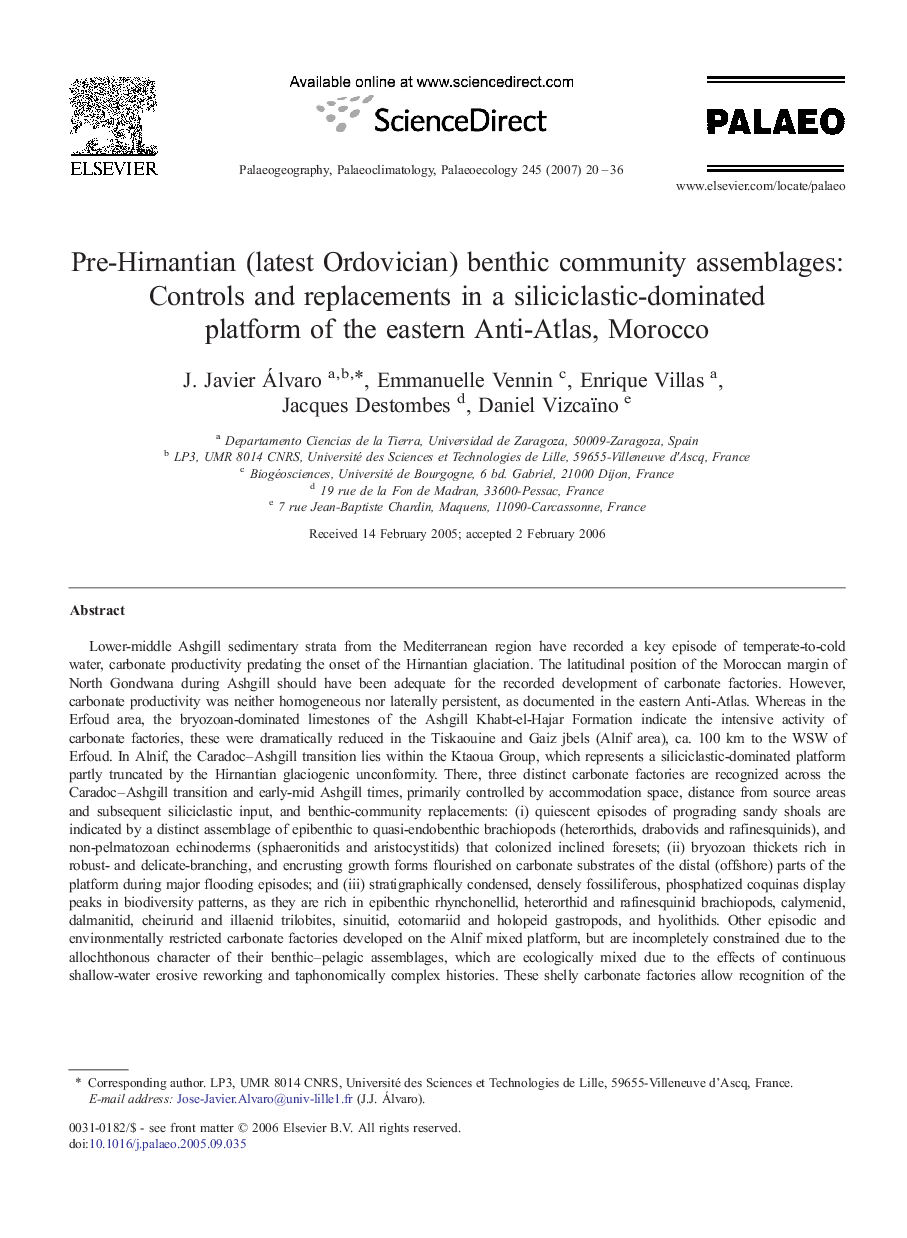| کد مقاله | کد نشریه | سال انتشار | مقاله انگلیسی | نسخه تمام متن |
|---|---|---|---|---|
| 4469166 | 1622358 | 2007 | 17 صفحه PDF | دانلود رایگان |

Lower-middle Ashgill sedimentary strata from the Mediterranean region have recorded a key episode of temperate-to-cold water, carbonate productivity predating the onset of the Hirnantian glaciation. The latitudinal position of the Moroccan margin of North Gondwana during Ashgill should have been adequate for the recorded development of carbonate factories. However, carbonate productivity was neither homogeneous nor laterally persistent, as documented in the eastern Anti-Atlas. Whereas in the Erfoud area, the bryozoan-dominated limestones of the Ashgill Khabt-el-Hajar Formation indicate the intensive activity of carbonate factories, these were dramatically reduced in the Tiskaouine and Gaiz jbels (Alnif area), ca. 100 km to the WSW of Erfoud. In Alnif, the Caradoc–Ashgill transition lies within the Ktaoua Group, which represents a siliciclastic-dominated platform partly truncated by the Hirnantian glaciogenic unconformity. There, three distinct carbonate factories are recognized across the Caradoc–Ashgill transition and early-mid Ashgill times, primarily controlled by accommodation space, distance from source areas and subsequent siliciclastic input, and benthic-community replacements: (i) quiescent episodes of prograding sandy shoals are indicated by a distinct assemblage of epibenthic to quasi-endobenthic brachiopods (heterorthids, drabovids and rafinesquinids), and non-pelmatozoan echinoderms (sphaeronitids and aristocystitids) that colonized inclined foresets; (ii) bryozoan thickets rich in robust- and delicate-branching, and encrusting growth forms flourished on carbonate substrates of the distal (offshore) parts of the platform during major flooding episodes; and (iii) stratigraphically condensed, densely fossiliferous, phosphatized coquinas display peaks in biodiversity patterns, as they are rich in epibenthic rhynchonellid, heterorthid and rafinesquinid brachiopods, calymenid, dalmanitid, cheirurid and illaenid trilobites, sinuitid, eotomariid and holopeid gastropods, and hyolithids. Other episodic and environmentally restricted carbonate factories developed on the Alnif mixed platform, but are incompletely constrained due to the allochthonous character of their benthic–pelagic assemblages, which are ecologically mixed due to the effects of continuous shallow-water erosive reworking and taphonomically complex histories. These shelly carbonate factories allow recognition of the dominant benthic-community assemblages that predated the onset of the Hirnantian glaciation on this part of the Moroccan margin of North Gondwana.
Journal: Palaeogeography, Palaeoclimatology, Palaeoecology - Volume 245, Issues 1–2, 7 March 2007, Pages 20–36